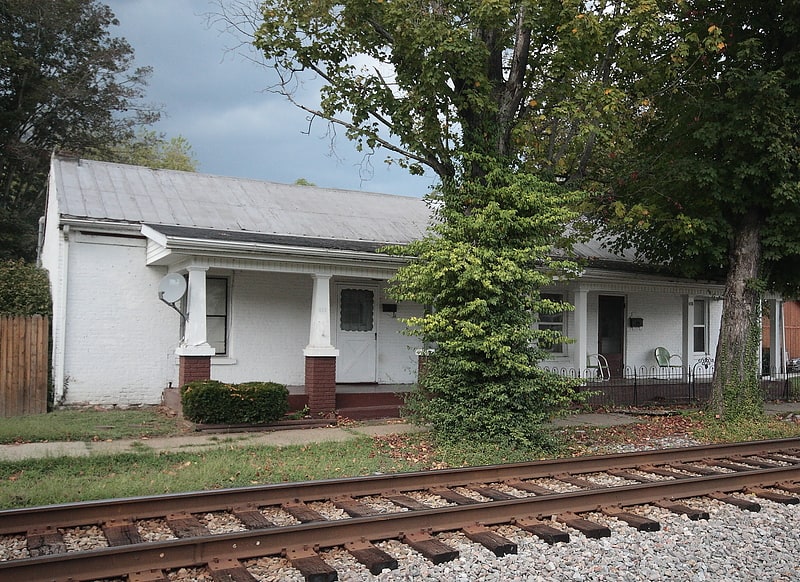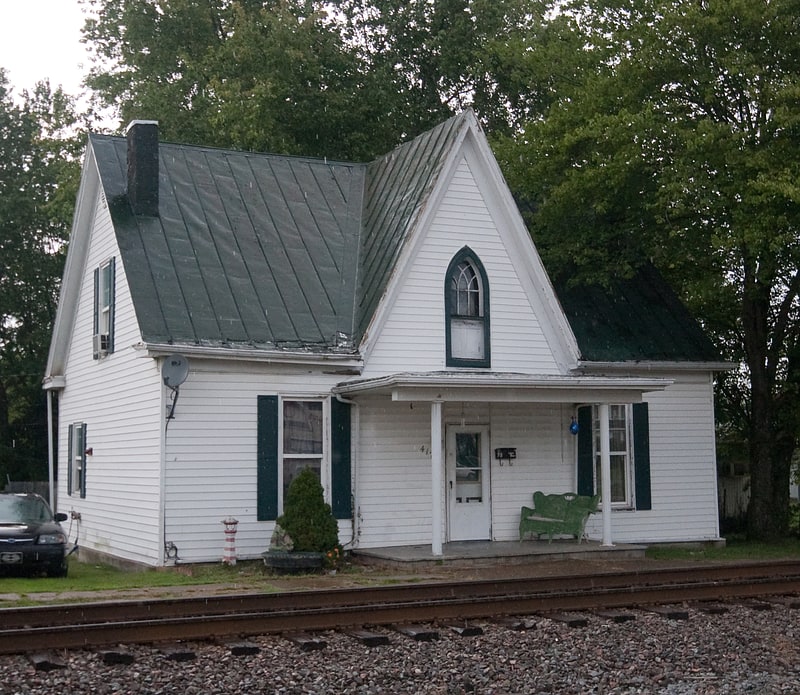Discover 4 hidden attractions, cool sights, and unusual things to do in Augusta (United States). Don't miss out on these must-see attractions: Confederate Monument in Augusta, Wells-Keith House, and James Weldon House. Also, be sure to include Brothers-O'Neil House in your itinerary.
Below, you can find the list of the most amazing places you should visit in Augusta (Kentucky).
Table of Contents
Confederate Monument in Augusta

The Confederate Monument in Bracken County, Kentucky, in Augusta, Kentucky, honors eight unknown Confederate soldiers who were killed attacking Augusta in September 1862. Confederate Colonel Basil W. Duke led a force of Confederate soldiers to raid the town, on September 27, 1862, only to be driven back by a home guard force numbering 100 and backed up by gunboats. Eight Confederate soldiers of the 21 who died were buried in Payne Cemetery. In 1903 the present monument was placed at their burial spot.
The monument is a granite tombstone four feet high with a base three feet wide. At the top of the tombstone is the Confederate battle flag. The stone was placed where the unknown soldiers were buried, forty-one years after the skirmish in which they were killed. The John B. Hood Camp of the United Confederate Veterans was responsible for the funding for the monument, which totaled $550.
On July 17, 1997, the Confederate Monument in Augusta was one of sixty-one different monuments related to the Civil War in Kentucky placed on the National Register of Historic Places, as part of the Civil War Monuments of Kentucky Multiple Property Submission. It is the most northerly of the monuments on the list that honor only Confederates; the Veteran's Monument in Covington to the north honors both sides.
The monument is best reached from the parking area by the flagpole on the river side of Kentucky State Road 8 west of town by descending the nearby stairs. The only other route involves walking across private yards and then up a steep 100 foot hill through Payne Cemetery.[1]
Wells-Keith House

The Wells-Keith House is the only single-story brick double house in Augusta. Both units have hall-parlor plans. The west unit may have been built first, based on chimney placement. The west gable features an end chimney while there is an absence of a chimney on the east gable. Stylistic details include common bond masonry, small two-over-two sash and sandstone lintels and sills.
Theodore Hamilton, former mayor of Augusta, conveyed lots 4 and 5 in Square 19 to Lewis B. Wells In 1858. Wells paid $575 for the property and sold it to Anderson D. Keith for $900 in 1864. Keith, a native of Virginia, was listed in the 1850 census as one of four Augusta physicians. The "house and lot" were deeded to Ann G. Keith in 1871.[2]
James Weldon House

Historical landmark in Augusta, Kentucky. The James Weldon House is a historic house in Augusta, Kentucky. It is an unaltered example of Gothic vernacular architecture.
The three bay frame house is distinguished by a center gable and lancet style window. Side elevations have cornice returns and six-over-six windows. The front elevation has two-over-two lights on the first floor and a transom window over front door. Other details include small circular attic vents in the side gables and a front porch added later. The roof is covered in ribbed metal. Foundation material is rubble limestone.
James W. Weldon was listed as the owner of record in 1877. W.T. Fields acquired the property by 1884.[3]
Brothers-O'Neil House

The Brothers-O'Neil House is fully developed example of Bungalow architecture. The gable roof is pierced by a traditional roof dormer and exterior brick chimney on the south elevation. The front porch is supported by two large wire-cut brick columns. The foundation is concrete with a sandstone plinth. Side gables have a shingle wall treatment above the first floor, while the other walls have aluminum siding. The interior of the house comprises beamed ceilings and original woodwork.
The estate of Marie M. Marshall deeded this land to the Home Mission of the Presbyterian Church in 1916. An Augusta undertaker, L. M. Brothers, acquired the vacant parcel following the brief interim ownership of William Sayers, The house was built by Brothers' son-in-law, Leo G. O'Neil, during 1916 and 1917. Brothers deeded half interest in the house and property to O'Neil in 1917. Both families continued to live in the house. In 1922, as part of a divorce settlement, O'Neil deeded "the house and all claims of alimony and future support" to his former wife who sold the property in 1923 to Isaac Reynolds.[4]